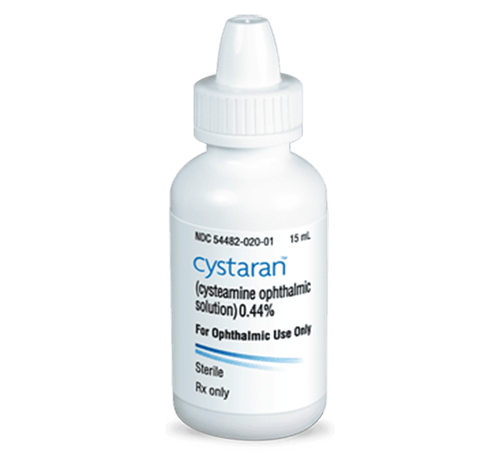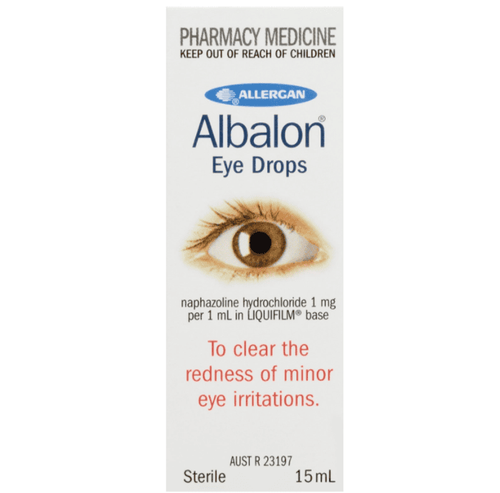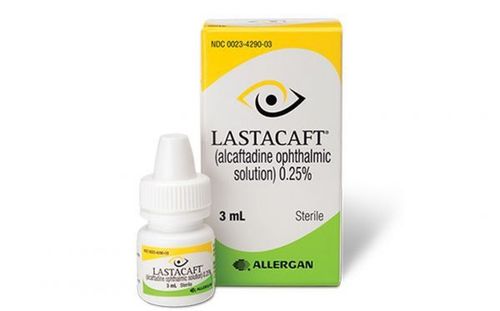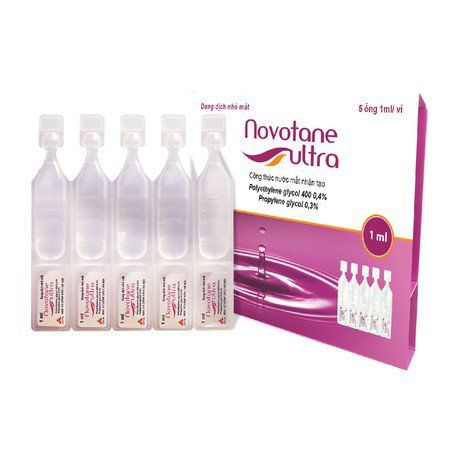This is an automatically translated article.
What is Tetrahydrozoline? Tetrahydrozoline is a decongestant ophthalmic solution for the relief of symptoms of conjunctival edema and congestion secondary to allergic reactions and mild eye irritation. But if you use too much, your eyes will become red and swollen. So to find out what is the drug Tetrahydrozoline? The following article will help you better understand the uses of Tetrahydrozoline.
1. What are the uses of Tetrahydrozoline?
Tetrahydrozoline is a medication used in ophthalmology, used as eye drops, has an analgesic effect, works by constricting swollen blood vessels in the eye, reducing eye redness. Tetrahydrozoline medicine contains the ingredient Tetrahydrozoline and is packaged as Bizodex eye drops, Rohto Zi phi, Tetrahydrozolin 0.05%, Hanluro-Plus eye drops, Hanluro-Plus eye drops, V.Rohto cool .Tetrahydrozoline works to reduce redness caused by eye irritation. It works by constricting swollen blood vessels in the eye, reducing eye redness.
Some other effects of the drug that are not listed on the approved drug label, but your doctor may prescribe you to take. You should only use this medicine to treat certain other medical conditions when prescribed by your doctor.
On the other hand, this drug is contraindicated in the following cases:
Hypersensitivity to any component of the drug. Children under 2 years old. Do not use in patients with glaucoma or corneal endothelial dystrophy.
2. Usage of the drug Tetrahydrozoline
2.1. You should use Tetrahydrozoline eye drops as directed by your doctor or check the label on the medicine for exact directions for use. Tetrahydrozoline eye drops are for ocular use only. Avoid contact with mucous membranes of the eyes. If you wear contact lenses, remove them before using the eye drops. Wash your hands thoroughly when using eye drops, use your fingers, pull the lower eyelid to ease the eye drops. Put the medicine in the eye and gently close the eye and use the finger to apply pressure to the inner corner of the eye and continue to apply pressure for 1-2 minutes after applying the medicine. Be careful not to blink. Wipe the excess with a dry cloth around the eye, being careful not to touch the eye. If you have any questions while taking this medicine, ask your doctor or pharmacist. 2.2. Dosage For Adults: The usual adult dose for dry/red eyes is 1 - 2 drops in each affected eye, 1 - 4 times a day as needed.
For children:
Usual dosage for children under 6 years of age should consult a doctor before use. Usual Pediatric Dose for Children 6-18 Years: 1-2 drops in each affected eye, 1-4 times a day as needed. Long-term treatment with very high doses can cause toxicity. In children, there is a risk of overdose, especially if accidentally ingested. Signs of overdose are lethargy, drowsiness or also irritability, abnormal heart rate and blood pressure, changes in body temperature...
When experiencing these conditions, the patient should stop medication and symptomatic treatment. Fluid maintenance therapy may be initiated if necessary. Respiratory rate drops to 10 or less should be responsive to oxygen therapy and respiratory support. Blood pressure should be carefully monitored to prevent hypotensive episodes. There is no antidote for tetryzoline overdose. However, in one case report the use of naloxone was successful in reversing the clinical signs and symptoms of tetryzoline overdose in children.
3. Notes on the use of Tetrahydrozoline
Use with caution in cases of high blood pressure, diabetes, hyperthyroidism, cardiovascular abnormalities (such as hypertensive coronary artery disease, cerebral arteriosclerosis) and infection or damage. Reversible congestion may occur with prolonged use of ocular vasoconstrictors. To avoid contamination of the medication, do not touch the tip of the dropper to the surface of the eye. If eye pain, vision changes, eye irritation/redness persists, or if condition worsens or persists for more than 72 hours, re-diagnosis should be performed. Drugs used during pregnancy can cause adverse effects (miscarriage, teratogenicity, fetal malformation ...) to any stage of pregnancy development, especially the first trimester. Therefore, it is best not to use the drug for pregnant women. In the case of mandatory use, it is necessary to consult carefully with your doctor, pharmacist before making a decision. The drug can be passed to a baby through breastfeeding. It is best not to or limit the use of the drug during breast-feeding.
4. Tetrahydrozoline side effects
Side effects of the drug include: Blurred vision; tearing of the cornea of the eye, rash, trouble breathing, tightness in the chest, swelling of the mouth, face, lips, or tongue, eye redness or irritation; Headache .
This is not a complete list of side effects and others may occur. If you have any questions about side effects, consult your doctor or pharmacist.
5. How to store Tetrahydrozoline
You should store at room temperature, away from moisture and light. Do not store in the bathroom or in the freezer. You should keep in mind that each medicine may have different storage methods. Therefore, you should carefully read the storage instructions on the packaging or ask the pharmacist. Keep medicine out of reach of children and pets.
Please dial HOTLINE for more information or register for an appointment HERE. Download MyVinmec app to make appointments faster and to manage your bookings easily.













